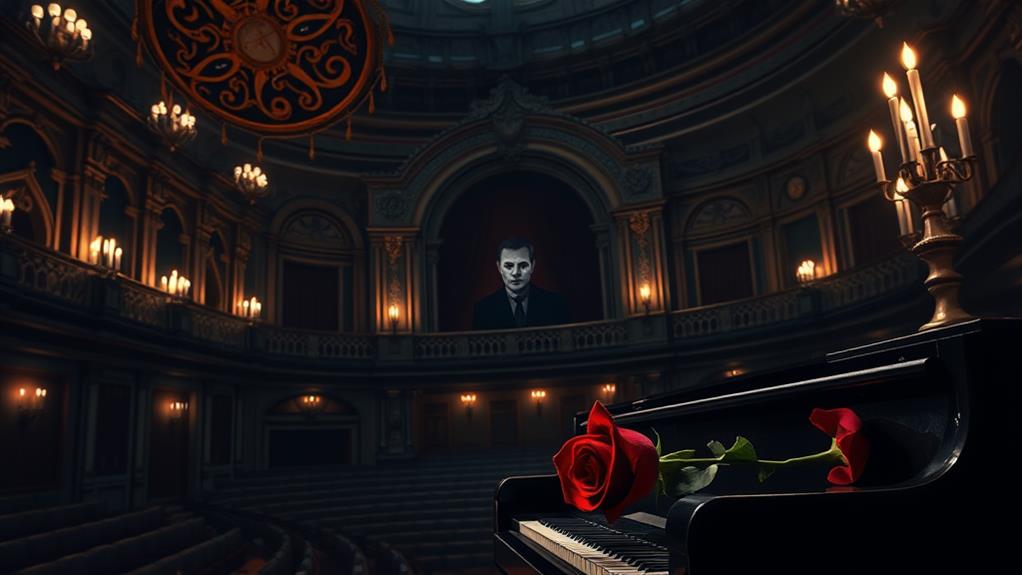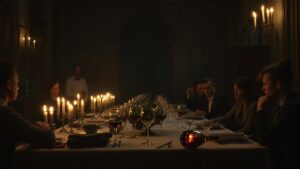In Gaston Leroux's "The Phantom of the Opera," you're drawn into a chilling story of obsession and unrequited love set against the backdrop of the Paris Opera House. You'll meet Erik, the disfigured Phantom, whose desperate fixation on the beautiful soprano Christine Daaé spirals into madness. The love triangle with Raoul explores the painful depths of desire and rejection, ultimately highlighting the tragic consequences of obsession. Leroux masterfully blends gothic elements and emotional turmoil, creating an atmosphere that lingers long after the last page. There's much more to this tale than meets the eye, and you'll want to uncover it all.
Overview of the Story
In "The Phantom of the Opera," Gaston Leroux pulls you into the eerie world of the Paris Opera House, where a disfigured genius named Erik, or the Phantom, lurks in the shadows. The story revolves around Christine Daaé, a talented young soprano whose beauty and voice captivate the Phantom's heart, igniting a dangerous obsession.
Set against the backdrop of the haunting setting of Paris Opera, the labyrinthine corridors and hidden passages enhance the mystery and tension of the narrative. As you explore deeper, you'll witness the complex love triangle that forms between Christine, the Phantom, and her childhood friend, Raoul.
The Phantom, desperate to win Christine's affection, manipulates events around her, resorting to dark and violent methods that reflect his deep-seated pain and rejection from society. His love for Christine is intense yet twisted, showing how obsession can corrupt even the purest feelings.
As the narrative unfolds, you'll feel the tension build, leading to a climactic confrontation between Raoul and the Phantom, a battle that ultimately highlights the struggle between love and madness.
In this haunting tale, Leroux explores the depths of human emotion, intertwining themes of beauty, despair, and the lengths one will go to for love, making it a timeless classic in gothic literature.
Themes Explored in the Novel
In "The Phantom of the Opera," you'll encounter the intense interplay of obsession and desire, especially through the Phantom's fixation on Christine.
This passionate longing leads to tragic outcomes, revealing love's dark consequences and the heartache of rejection.
The story also examines the allure of a decadent lifestyle and the impact of the allure of wealth on human relationships.
As you explore these themes, you'll see how beauty and societal standards profoundly impact the characters' lives and choices.
Obsession and Desire
Obsession and desire intertwine dramatically in "The Phantom of the Opera," where the Phantom's fixation on Christine Daaé propels the story forward. His obsessive love reveals how unrequited affection can spiral into madness, showcasing a dark side of desire that disrupts lives.
Erik, the Phantom, embodies the struggle between his longing for connection and the horror of his identity, concealed behind a mask. This duality highlights how deeply intertwined desire is with self-perception and acceptance.
Christine's conflicting emotions toward both Erik and Raoul further illustrate the complexities of desire. Torn between Erik's passionate intensity and Raoul's noble safety, she navigates her own feelings of love and obligation, challenging her understanding of what true affection means.
The societal rejection Erik faces due to his deformity exacerbates his obsession, as his isolation fuels a desperate need for love and validation.
In this haunting narrative, the themes of obsession and desire raise questions about beauty, identity, and the motivations that drive human relationships. The Phantom's tragedy lies not only in his love for Christine but also in his inability to reconcile his desire with the reality of who he is.
Beauty and Rejection
The stark contrast between beauty and rejection plays a significant role in "The Phantom of the Opera," shaping the characters' experiences and relationships. You see how Christine Daaé embodies beauty, celebrated for her allure and talent, while the Phantom, Erik, faces grotesque rejection due to his disfigurement. This societal rejection profoundly affects the Phantom's psyche, fueling his obsession with Christine and highlighting the destructive nature of unrequited love.
As you explore Christine's internal struggle, you notice her attraction to the Phantom's artistic genius clashing with her fear of his madness. This complexity underscores the novel's critique of superficial judgments based on appearance, suggesting that true beauty lies within one's character.
Erik's tragic yet compelling nature reveals the emotional turmoil that rejection breeds, leading you to empathize with him despite his darker tendencies.
Ultimately, the novel reflects on the isolation that rejection can cause, emphasizing the deep human desire for connection and acceptance. In this haunting tale, beauty and rejection intertwine, leaving you to ponder the true meaning of love and the consequences of obsession.
Love's Dark Consequences
Love's dark consequences permeate "The Phantom of the Opera," revealing how deep emotional attachments can spiral into madness and despair. The novel explores the complexities of love through its haunting characters, leading you to ponder:
- Obsessive Love: Erik's fixation on Christine showcases how passion can morph into a dangerous obsession, blending beauty with horror.
- Unrequited Love: Erik's isolation and disfigurement fuel his madness, illustrating how unfulfilled desires can distort one's identity and morality.
- Tragic Outcomes: The love triangle between Christine, Raoul, and Erik highlights how emotional turmoil can devastate everyone involved.
This tale underscores the theme of masks—both literal and metaphorical. Characters hide their true selves, resulting in tragic outcomes that leave you questioning their motivations.
Erik embodies a duality, presenting a romantic figure while simultaneously being a menacing presence, challenging your perceptions of heroism and villainy.
As you explore deeper into this dark narrative, the complexities of love become painfully clear, revealing how obsession and unrequited feelings lead to destruction.
Ultimately, "The Phantom of the Opera" serves as a poignant reminder of love's power and its potential to wreak havoc when left unchecked.
Character Dynamics and Development
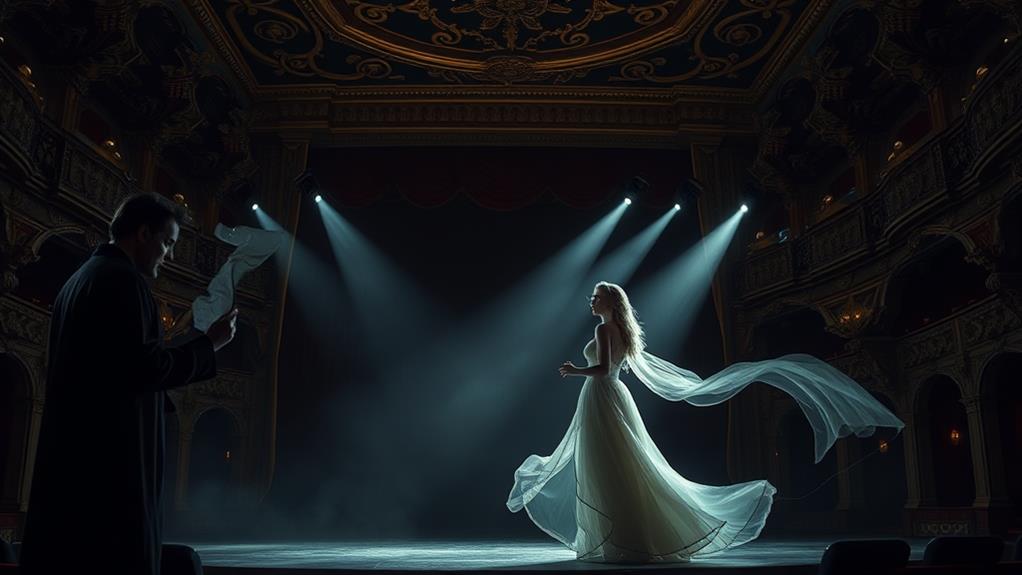
Within the intricate web of relationships in "The Phantom of the Opera," the character dynamics between Erik, Christine, and Raoul create a compelling exploration of human emotion. Erik, the Phantom, embodies obsession, driven by a desperate love for Christine Daaé. His tragic narrative discloses the depths of madness intertwined with unrequited affection, illustrating how societal rejection shapes his identity.
Much like the haunting atmosphere of Manderley in *Rebecca*, Erik's world is filled with secrets and hidden depths, where love and fear coexist, creating an unsettling yet enthralling dynamic a haunting atmosphere.
Christine stands as a beacon of innocence and strength, caught in a tumultuous love triangle. As she navigates her feelings for both Erik and Raoul, you witness her internal conflict and emotional turmoil. This struggle highlights the complexities of love, manipulation, and the impact of societal expectations on personal relationships.
Raoul, though portrayed as a traditional hero, often comes off as ineffective and weak. This portrayal creates tension within the love triangle and raises questions about heroism and moral ambiguity.
The limited development of supporting characters like Madame Giry emphasizes the focus on the main trio, allowing their dynamics to take center stage. Ultimately, the interactions among Erik, Christine, and Raoul challenge you to empathize with their flawed natures, revealing the devastating effects of obsession and identity in their intertwined lives.
Gothic Elements and Atmosphere
Gothic elements permeate "The Phantom of the Opera," enhancing the emotional intensity of the characters' struggles. The haunting atmosphere of the Paris Opera House serves as a backdrop for themes of unrequited love and madness, making it feel like a character itself.
Here are three key gothic elements that shape this dark tale:
- Isolation: The Phantom's disfigurement forces him into seclusion, reflecting the deep loneliness that pervades the narrative, similar to the isolation experienced by Bigger Thomas in the struggles of a young Black man.
- Obsession: Erik's relentless fixation on Christine drives the plot, showcasing how love can transform into a dark, consuming force.
- Duality: The stark contrast between the opera's glamorous facade and the Phantom's tragic reality highlights the theme of appearances versus reality.
Leroux's vivid descriptions and macabre imagery create a rich aesthetic, intertwining romance with supernatural undertones that evoke beauty and despair.
Music plays a vital role, acting as a powerful symbol of connection amidst the darkness. Through these gothic elements, you'll find yourself enveloped in an atmosphere that captures the essence of obsession and the tragic beauty of the characters' emotional turmoil.
Author Gaston Leroux
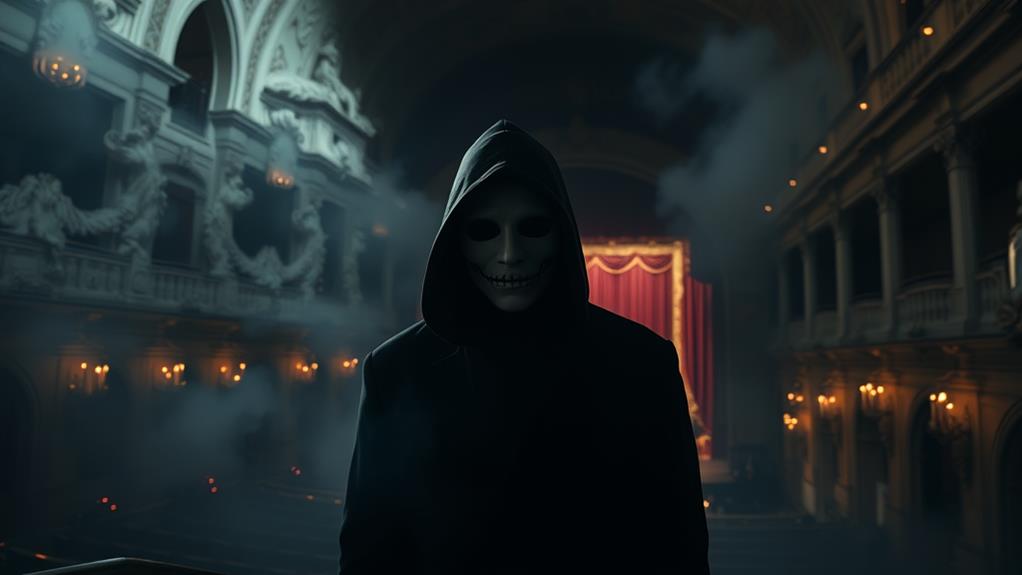
Gaston Leroux, born in 1868, shaped his writing through his early life experiences and his work as a journalist.
His time as a court reporter and theater critic gave him a unique perspective that enriched the realism in "The Phantom of the Opera."
This blend of personal and professional insights mirrors the complexities of human relationships found in other Gothic tales, such as the exploration of obsession and jealousy in "Rebecca."
You'll see how these influences blend to create an enthralling gothic tale that resonates even today.
Early Life Influences
The vibrant cultural landscape of Paris in the late 19th century played an essential role in shaping Louis Alfred Leroux, better known as Gaston Leroux, into the author we recognize today. As you explore his early life, you'll discover several key influences:
- Artistic Environment: Born in Paris in 1868, Leroux was surrounded by the city's rich artistic community, which sparked his imagination and creativity.
- Theatrical Insights: Working as a court reporter and theater critic provided him a unique perspective on stagecraft, influencing the dramatic elements in "The Phantom of the Opera."
- Historical Events: His experiences covering significant events, like the Russian Revolution, blended realism with the fantastical, a hallmark of gothic literature.
These experiences fueled Leroux's fascination with obsession and the macabre. You can see how those themes play out in his characters, especially in the tragic figure of the Phantom.
Leroux's intricate storytelling and suspenseful narrative structure reflect his early life influences, establishing a foundation for the haunting and complex world of "The Phantom of the Opera."
Journalistic Background Impact
Leroux's journalistic background considerably shaped his approach to storytelling in "The Phantom of the Opera." Working as a court reporter and theater critic, he developed a keen eye for detail and a deep understanding of human behavior. This experience allowed him to infuse his narrative with journalistic precision, making the opulent world of the opera house feel authentic and vibrant.
His firsthand encounters with the dramatic arts informed his portrayal of the opera house as a living entity, brimming with secrets and shadows. This atmospheric richness enhances the gothic storytelling that defines the novel.
You'll find that Leroux skillfully weaves in themes of societal rejection, reflecting the struggles of characters who are ostracized for their differences, particularly the Phantom himself.
Moreover, his background in covering significant events, such as the Russian Revolution, sharpened his ability to engage in social commentary. This multi-layered narrative prompts you to reflect on the complexities of obsession and love, revealing moral ambiguities that resonate deeply.
Leroux's journalistic insights not only enrich the story but also invite you to question the very nature of humanity within the dark confines of obsession and desire.
Adaptations and Cultural Legacy
Adaptations of "The Phantom of the Opera" have substantially shaped its cultural legacy, transforming the story into a multifaceted phenomenon. The themes of love and obsession, akin to those found in stories like the power of storytelling, resonate deeply with audiences.
You've likely encountered various interpretations that highlight the Phantom's enduring appeal. Here are three remarkable adaptations:
- The 1986 musical by Andrew Lloyd Webber, which became a global sensation and one of Broadway's longest-running shows, with over 13,000 performances.
- The 1925 silent film featuring Lon Chaney, which set the standard for future cinematic portrayals of the Phantom.
- The 2004 film starring Gerard Butler, offering a modern take that introduced the tale to a new generation.
These adaptations showcase the Phantom as an iconic figure, often representing the misunderstood genius and tragic romantic hero. Each interpretation emphasizes different facets of the characters and themes, enriching the cultural legacy of the original work.
The novel has even inspired literary endeavors, such as Susan Kay's "Phantom," which dives deeper into the character's backstory. These variations and discussions around them reveal how the Phantom continues to resonate, inviting audiences to explore the layers of obsession and love embedded in Leroux's narrative.
Reception and Critique
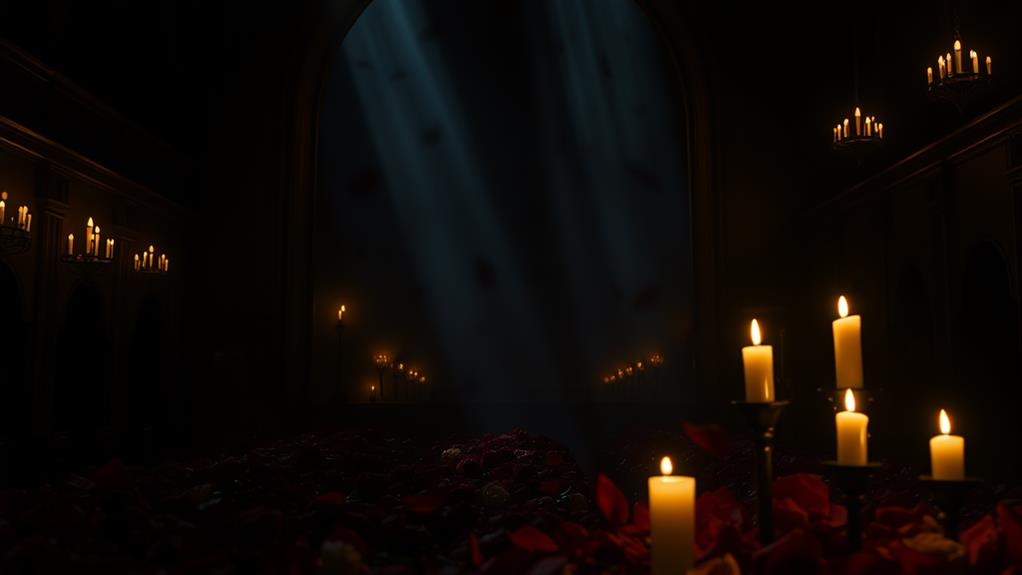
Many readers have found "The Phantom of the Opera" to be an enchanting yet polarizing experience. With an average rating of 3.96 based on over 249,000 ratings, it's clear that opinions about the novel's depth and complexity vary widely. Critics often highlight the emotional intensity of the narrative, pulling you between admiration and frustration as you navigate the characters' flaws and moral ambiguities.
The exploration of themes like obsession and personal growth resonates with readers, much like the enduring strength found in the resilience of characters in Dickens' works.
While some appreciate the haunting themes and character development, others feel the pacing drags and that supporting characters lack depth, overshadowed by the Phantom and Christine. This contrast can frustrate readers seeking a richer ensemble.
Additionally, the impact of various adaptations has shaped perceptions of the story; many find Leroux's original portrayal of the Phantom darker and more nuanced than the romanticized versions seen in musicals and films.
The epilogue also provokes mixed reactions. Some readers see it as unnecessary, while others argue it adds significant emotional weight to the narrative.
Ultimately, your experience with "The Phantom of the Opera" will depend on how you resonate with its themes of obsession and the complexities of love.
Emotional Impact on Readers
Engaging with "The Phantom of the Opera" pulls you into a whirlwind of emotions, as the story's intensity both captivates and disturbs.
You'll find yourself maneuvering through:
- The emotional intensity of Erik's tragic obsession, which invites sympathy yet incites horror, reminiscent of the emotional rollercoaster of joy and sorrow in other tragic love stories.
- The themes of rejection that resonate deeply, reflecting our own experiences and vulnerabilities.
- The haunting atmosphere that Leroux creates, immersing you in the opera house's dark allure.
As you read, you can't help but feel admiration for the characters, even while grappling with their flawed decisions.
Erik's complex nature evokes a mix of feelings, forcing you to confront the duality of love and cruelty.
The themes of rejection permeate the narrative, striking a chord with your own longing for connection and acceptance.
Graphic Novel Adaptation Insights
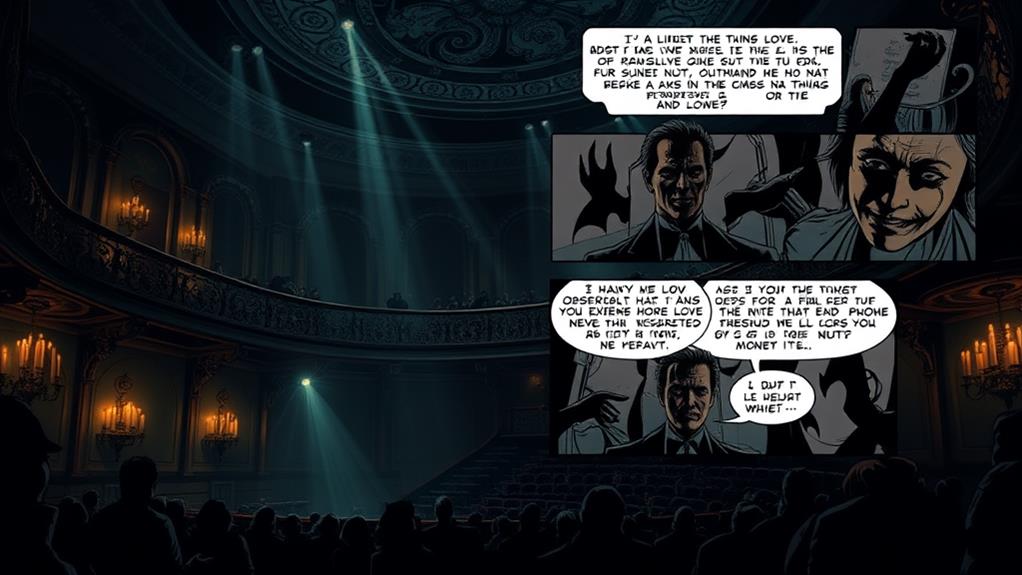
The graphic novel adaptation of "The Phantom of the Opera" offers a fresh perspective on Gaston Leroux's classic tale, merging striking visuals with evocative lyrics. Illustrated by José María Beroy, the artwork captures the haunting beauty and gothic atmosphere of the Paris Opera House, making the story of the opera ghost come alive in ways you mightn't expect.
Cavan Scott's writing brings a unique storytelling style that blends character dialogues with song lyrics, enriching your reading experience. This adaptation parallels the transformative journeys found in literature, such as Pip's evolution in Great Expectations as he navigates love and ambition.
This adaptation shines a light on the themes of love and obsession, reflecting the darker elements of the original narrative while making it accessible to new audiences. You'll find that the combination of visual and lyrical storytelling engages you deeply, drawing you into the world of the Phantom and Christine.
Critics praise this graphic novel for its ability to resonate with both longtime fans and those unfamiliar with Leroux's work. It highlights the ongoing popularity of "The Phantom of the Opera" and underscores the significance of adapting classic narratives into graphic formats for contemporary readers.
You'll appreciate how this adaptation revitalizes a timeless tale while keeping its core essence intact.
Conclusion
In the end, you realize that the true monster isn't the Phantom lurking in the shadows, but the very love that drives him to madness. You're left pondering how desire can twist into obsession, blinding even the purest hearts. Ironically, while you crave the romance that binds Christine and the Phantom, you can't help but feel the weight of their tragic fate. Love, it seems, can be as haunting as any ghost, leaving scars that linger long after the final curtain falls.

